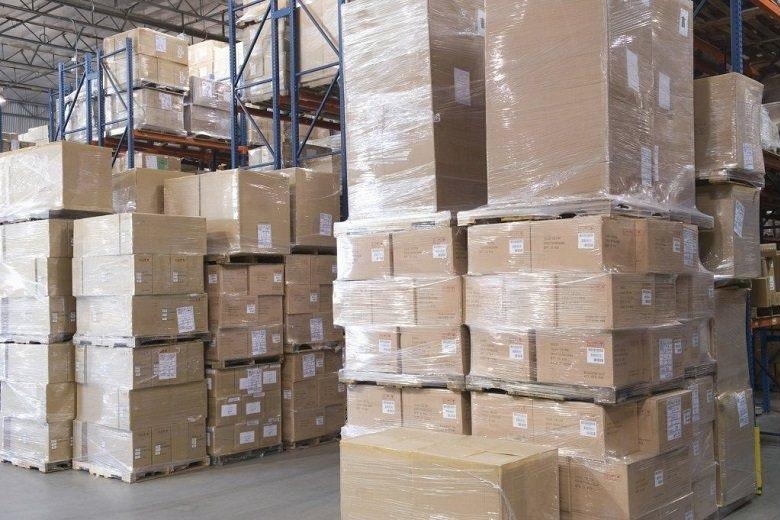When you’re planning a trade show exhibit and managing event logistics, costs can quickly add up — especially when you consider hidden budget items like shipping costs. Shipping and drayage costs can account for up to 30 percent of your total trade show budget, yet they don’t make a direct impact on your prospects or customers.
Wondering how to reduce your shipping costs without diminishing your presence? Mike Scherer, president of Downing Displays, says “the biggest shipping costs you can control are the number of crates and weights.”
Keep reading for creative ways to bring your shipping costs down.
Consider Custom Rentals
The word “rentals” makes many exhibitors think of dirty, dented and out-of-style rental displays of years gone by. But renting has come a long way in recent years, so much so that most people can’t tell it’s a rental exhibit.
Custom rentals — which combine aluminum frames and panels, printed custom fabric graphics and other branding elements — have especially gained in popularity because of their flexibility and cost savings.
“Compared to shipping solid materials like wood or steel, with a custom rental exhibit made out of lightweight materials there’s greater opportunities to cut your total exhibit weight and save on shipping costs,” Scherer says.
Cut the Crates
Many trade show marketers don’t realize an empty shipping crate alone is often heavier than the materials inside that they protect. An empty crate can weigh 400 pounds, which means paying to ship a lot of dead weight.
When shipping crates, Scherer says you also pay for the dimensional weight of the container — the total space it occupies on a truck versus just the weight alone. “For a 4-by-4-by-12-foot crate that might be 500 pounds fully packed, taking into account the dimensional weight you could end up paying the cost to ship 800 to 900 pounds,” he says.
To save on shipping costs, Scherer says more clients are cutting the crates and shipping on skids. These flat, low wooden frames are great for shipping heavy objects like exhibit panels, pedestals, kiosks or cabinets without all the extra crate weight. “Just be sure to wrap any edges with cardboard or other hard materials, and wrap the entire skid in shrink wrap to protect the outsides from bumps or dings,” Scherer says.
Time It to Transship
For companies exhibiting at multiple shows a year, it’s often more cost effective to ship your exhibit from one trade show location to the next.
“For example, after completing your trade show in Las Vegas, rather than sending your booth back to your exhibit house in Ohio, send the exhibit on to the advance warehouse for your next show in Orlando,” Scherer says.
By timing it to transship, you’ll reduce the number of shipping legs and save on costs.
Forget the Fluorescents
Most exhibitors add some type of lighting to stand out on busy trade show floors. But trade show lighting is one of the overlooked shipping cost culprits. Heavy cases of lighting fixtures, along with truss and rigging equipment, quickly add shipping costs. And other lighting elements like florescent tubes are bulky and heavy, and add even more shipping costs.
To reduce crates and weights, many exhibitors are turning to small and compact LED strip lights, arm lights, rigid bar lights and LED modules to light up their exhibits.
Plus, many LED lights can be pre-installed in booths, light boxes or behind signage to eliminate the cost of shipping separate lighting cases or equipment.
Limit the Paper
Another suggestion from Scherer: Stop shipping heavy pallets of printed literature. “Studies show that up to 80 percent of printed materials get left behind,” he says.
Going digital with electronic literature cuts the cost of shipping printed materials, and exhibitors also eliminate waste by emailing materials directly to interested prospects. Plus, it’s much easier to make updates and you don’t have to worry about running out of inventory.
Shipping costs can take a bite out of your trade show budget. But these creative steps can help you save on shipping without making a noticeable difference in your brand presence.
Learn more about how HitLights customers use LED lighting at trade shows and events.
About HitLights
HitLights delivers LED lighting solutions for event exhibits, displays, signs, theater and film productions, and manufacturing. CEO Bin Yu formed the company through the Louisiana State University Business Incubator Program in 2010. Since then HitLights has grown to become a major player the LED industry. Customers come to HitLights for quality products, helpful customer service and creative solutions.

